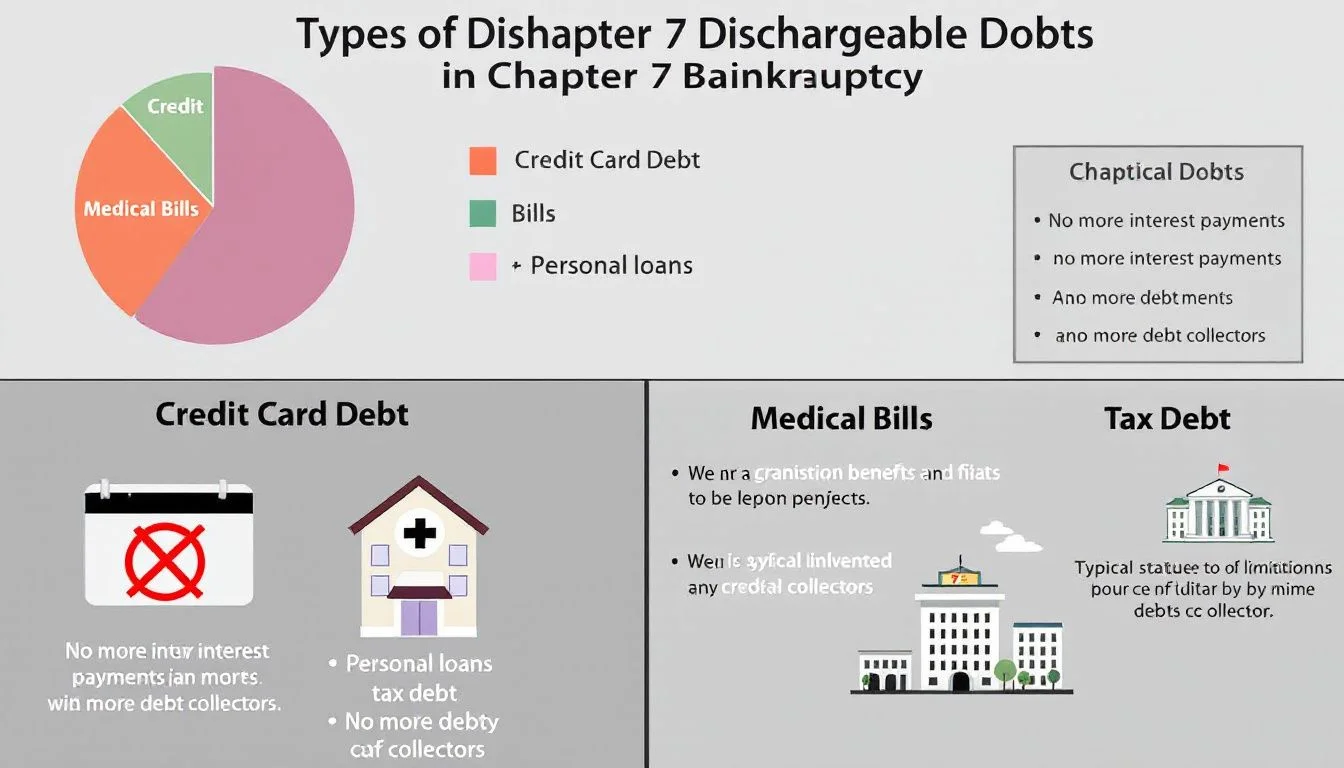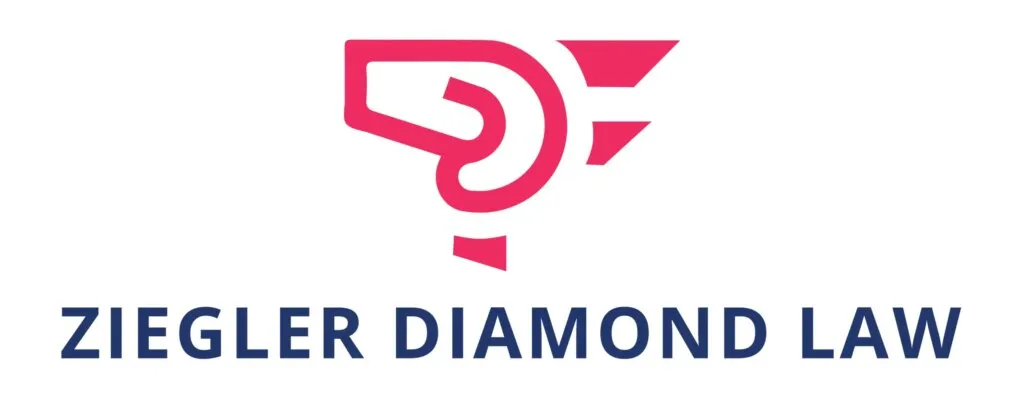How Much Debt Do You Need to File Chapter 7 Bankruptcy?
How Much Debt Do You Need to File Chapter 7 Bankruptcy?
If you’re asking, ‘How much debt do you need to file Chapter 7 bankruptcy?’ the answer is simple: there’s no minimum debt requirement. Whether your debt is small or large, what matters is your overall financial situation and your ability to pay back what you owe. This article will walk you through the key factors and criteria that determine eligibility for Chapter 7 bankruptcy, and help you assess if it is the right option for you.
Key Takeaways
- There is no minimum debt requirement to file for Chapter 7 bankruptcy; eligibility is based on overall financial circumstances, including income and expenses.
- Key eligibility criteria for Chapter 7 bankruptcy include passing the means test, completing credit counseling, and understanding the types of dischargeable debts.
- While Chapter 7 can relieve many unsecured debts like credit cards and medical bills, certain debts, such as tax liabilities and student loans, remain non-dischargeable.
No Minimum Debt Requirement for Chapter 7 Bankruptcy

One of the most common questions people ask when considering Chapter 7 bankruptcy is, “How much debt do I need?” Interestingly, the U.S. bankruptcy code does not set a minimum debt threshold for eligibility. This means that individuals can file for Chapter 7 bankruptcy regardless of the total debt amount. Whether you owe $5,000 or $500,000, what matters more is your overall financial situation rather than the specific debt amount.
What truly determines whether Chapter 7 bankruptcy is right for you is your income level and overall financial circumstances. Bankruptcy courts assess your ability to repay debts by examining your income, expenses, and assets. Thus, the decision to file should hinge on your unique financial situation rather than a specific debt amount.
Bankruptcy attorneys often recommend evaluating personal circumstances before deciding to file bankruptcy. For some, even a modest amount of debt can be overwhelming and unmanageable, warranting bankruptcy relief.
Conversely, some may have higher debt levels but enough income to handle payments without filing for bankruptcy. Assessing your financial health is crucial to determine if bankruptcy is the right solution for you.
Eligibility Criteria for Chapter 7 Bankruptcy
Filing for Chapter 7 bankruptcy requires meeting specific eligibility criteria defined by bankruptcy laws. These rules ensure that only those who truly need debt relief can benefit from a bankruptcy discharge.
Key eligibility components include passing the means test, completing credit counseling, and understanding the types of debts involved in the bankruptcy process.
The Means Test
The means test plays a crucial role in determining eligibility for Chapter 7 bankruptcy. It evaluates your income and disposable income to ensure you cannot reasonably repay your debts. To pass, your average monthly income over the past six months must be lower than your state’s median income for your household size.
Form 122A-1 compares your income to your state’s median income. If your income exceeds this level, you must complete Form 122A-2, which considers deductions for housing, utilities, healthcare, and other expenses to calculate your disposable income.
If your disposable income remains too high, you might need to consider filing under Chapter 13 instead.
Credit Counseling Requirements
A credit counseling course from an approved agency is required within 180 days before filing for Chapter 7. This course helps you explore all available debt relief options and ensures that bankruptcy is the best course of action for your financial situation.
Credit counseling offers valuable insights into managing debts more effectively and may even help you avoid bankruptcy. Approved agencies provide services like debt management plans and budgeting advice, which can be instrumental in resolving financial issues.
Types of Debts Considered
Knowing the types of debts considered in Chapter 7 bankruptcy is crucial. Debts are categorized into secured and unsecured. Secured debts, like mortgages or car loans, are backed by collateral and may result in asset loss if payments are missed.
Unsecured debts, unlike secured ones, are not backed by collateral. These include credit card debt, medical bills, and personal loans. Chapter 7 bankruptcy primarily aims to discharge unsecured debts, offering significant relief for those struggling with such obligations.
Assessing Your Financial Situation

Evaluating your financial situation is essential to determine if filing for Chapter 7 bankruptcy is the right choice. This involves assessing your total debt versus income, recognizing signs of unmanageable debt, and understanding the impact of debt on daily life.
Total Debt vs. Income
A critical factor in evaluating your financial situation is your debt-to-income ratio. A ratio exceeding 40% suggests unsustainable debt levels. Moreover, if debt payments surpass 20% of your monthly income, it signals financial distress.
High debt levels can severely limit your ability to save for future goals like retirement or homeownership. Thus, understanding your debt in relation to your income is crucial when deciding whether to file for bankruptcy.
Unmanageable Debt Indicators
Identifying signs of unmanageable debt can help determine if Chapter 7 bankruptcy is necessary. Consistently missing payments and facing collection calls are clear indicators of unmanageable debt. Repeated missed payments can lead to severe financial consequences, suggesting it might be time to consider bankruptcy.
Wage garnishment notifications are another critical indicator of unmanageable debt. If you can only make minimum payments, it’s a sign you’re struggling to manage your debts effectively.
Impact of Debt on Daily Life
Debt can profoundly impact daily life. Excessive debt often leads to increased stress and anxiety, affecting overall well-being. This financial burden can significantly harm mental health, leading to difficulties concentrating and maintaining relationships.
Overwhelming debt can interfere with daily functioning, making it challenging to focus on work and personal responsibilities. Recognizing how debt affects your daily life can help decide if bankruptcy is the right solution.
Common Types of Dischargeable Debts in Chapter 7

Chapter 7 bankruptcy can eliminate various types of unsecured debts, offering significant financial relief. Common dischargeable debts include credit card debt, medical bills, and personal loans.
Credit Card Debt
Credit card debt is one of the most common unsecured debts handled in Chapter 7 bankruptcy. Unpaid credit card balances, including late fees, are often forgivable under Chapter 7, and these can contribute to an individual’s overall debt obligations.
The success rate for discharging credit card debt in Chapter 7 is roughly 96.8%.
Medical Bills
Medical bills are another significant type of unsecured debt that can be classified as dischargeable debt in Chapter 7. There is no cap on the amount of medical debt that can be discharged, offering substantial relief for those struggling with high medical costs.
Medical expenses are categorized as unsecured debt, making them eligible for discharge under Chapter 7 bankruptcy.
Personal Loans and Payday Loans
Personal and payday loans are also categorized as unsecured debts that can be eliminated through Chapter 7 bankruptcy, provided they meet the necessary criteria.
Non-Dischargeable Debts in Chapter 7 Bankruptcy
While Chapter 7 bankruptcy can discharge many types of debts, certain obligations remain non-dischargeable. Common types include tax debts, student loans, and child support/alimony.
Tax Debts
Most tax liabilities cannot be discharged in bankruptcy unless specific criteria are met. Generally, the tax debt must be at least three years old, the return filed at least two years prior, and the tax assessed at least 240 days before the bankruptcy filing to qualify for discharge.
Student Loans
Discharging student loans in bankruptcy is particularly difficult, requiring proof of undue hardship. One must file an adversary proceeding and demonstrate that repaying the loan would cause undue hardship.
Child Support and Alimony
Child support and alimony obligations are always non-dischargeable, ensuring these payments continue regardless of bankruptcy status. Classified as domestic support obligations, these must be paid even after filing for bankruptcy.
Alternatives to Chapter 7 Bankruptcy

Alternatives to Chapter 7 bankruptcy include Chapter 13, out-of-court agreements, and debt counseling services. Exploring these options can benefit those who do not qualify for Chapter 7 or seek other debt relief solutions.
Chapter 13 Bankruptcy
Chapter 13 bankruptcy offers a structured repayment plan, allowing individuals to manage their debts while keeping more of their assets compared to Chapter 7.
Debt Consolidation
A debt consolidation loan combines all your debts into a single payment. When considering this option, ensure the loan offers a lower interest rate than your current debts.
Debt Settlement and Management Plans
Debt relief services assist in managing and settling debts. Typically, a minimum of around $10,000 in unsecured debt is required to work with a debt relief company.
The Role of the Bankruptcy Trustee
The bankruptcy trustee manages the bankruptcy case and liquidates nonexempt assets. Their primary duty is to maximize returns to unsecured creditors through this liquidation.
Preparing for Chapter 7 Bankruptcy Filing
Preparation for Chapter 7 bankruptcy involves gathering necessary documentation, understanding filing fees, and seeking legal assistance.
This guide covers these steps comprehensively.
Required Documentation
Key documents for Chapter 7 filing include recent pay stubs, tax returns for the last two years, and a comprehensive list of creditors. Filers must also provide proof of income, such as paycheck stubs and bank statements.
Additional documents may include your driver’s license, social security card, and evidence of credit counseling completion. Filers must also prepare schedules of assets and liabilities, current income and expenditures, statement of financial affairs, and executory contracts.
Understanding Filing Fees
The total cost to file a Chapter 7 bankruptcy case is currently $335. Including other required fees, the estimated cost can reach approximately $375. Additional costs may arise if a fee waiver or installment payment request is necessary.
Besides the filing fee, there may be additional costs for credit counseling and legal advice, which can vary. Understanding these expenses is crucial for budgeting and preparing for the bankruptcy process.
Legal Assistance
Consulting a bankruptcy attorney provides specialized guidance through the legal process. They manage your case, advise on legal options, and represent you in bankruptcy court. An attorney can also help gather the necessary documentation for preparing a Chapter 7 bankruptcy.
Legal assistance ensures individuals are aware of their rights and obligations during the bankruptcy process. This support is invaluable for navigating the complexities of bankruptcy law and achieving the best possible outcome.
Summary
Navigating through the complexities of Chapter 7 bankruptcy can be daunting, but understanding the key elements can make the process more manageable. There is no minimum debt requirement for filing, making it accessible to those in varying degrees of financial distress. Eligibility criteria, such as the means test and credit counseling, ensure that only those who genuinely need debt relief can benefit from the bankruptcy discharge.
By recognizing the types of dischargeable and non-dischargeable debts, as well as exploring alternatives, individuals can make informed decisions about their financial future. Consulting with a bankruptcy attorney and preparing the necessary documentation are critical steps in this journey. Ultimately, Chapter 7 bankruptcy can provide a fresh start, helping individuals regain control of their financial lives.
Frequently Asked Questions
Is there a minimum debt amount required to file for Chapter 7 bankruptcy?
There is no minimum debt amount required to file for Chapter 7 bankruptcy, as the U.S. bankruptcy code does not establish a threshold for eligibility. Therefore, individuals can file regardless of their total debt amount.
What is the means test and how does it affect my eligibility for Chapter 7 bankruptcy?
The means test evaluates your income and disposable income to establish your eligibility for Chapter 7 bankruptcy. If your average monthly income over the past six months is below your state’s median for your household size, you qualify for Chapter 7.
Can credit card debt be discharged in Chapter 7 bankruptcy?
Yes, credit card debt can generally be discharged in Chapter 7 bankruptcy, allowing you to eliminate unpaid balances and late fees.
Are student loans dischargeable in Chapter 7 bankruptcy?
Student loans are generally not dischargeable in Chapter 7 bankruptcy unless you can prove undue hardship, a challenging standard to meet. Therefore, it’s essential to explore other options for managing student debt.
What documents are required to file for Chapter 7 bankruptcy?
To file for Chapter 7 bankruptcy, you need recent pay stubs, tax returns for the last two years, a list of creditors, bank statements, and proof of income. These documents are essential for the application process.

